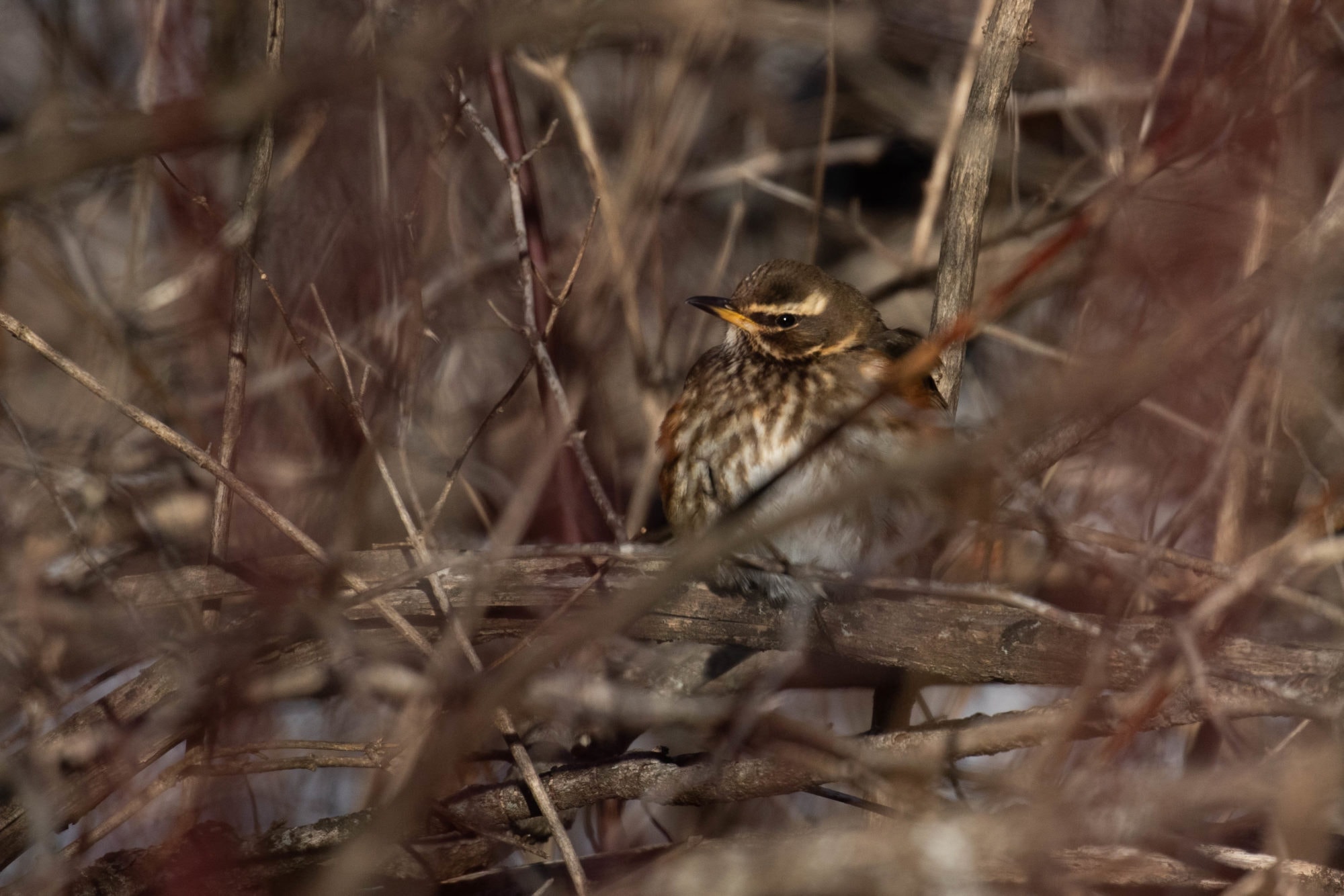
Mega-Rare Redwing in Maine!
Jan 30, 2021 | by Alex Lamoreaux
 No, not a Red-winged Blackbird – a Redwing! This Turdus thrush is a Code 4 rarity to North America and is very similar to our American Robin. Redwings nest across Iceland, northern Europe, and Russia then winter in large, nomadic flocks throughout southern Europe, the northern edge of Africa, and some areas of the Middle East. They have very rarely been recorded in North America, with most records coming from the maritime areas of eastern Canada. This Redwing found yesterday by Brendan McKay at Capisic Pond in Maine marks the 5th eastern US sighting. It is the 2nd Maine record, with the 1st record only just coming from earlier this month when another bird was found on private property and not seen again. This Redwing double-whammy in Maine is part of a major irruption of Redwings (and at least one Fieldfare) into northeastern North America this month with one Redwing in New Brunswick and three in Newfoundland!
No, not a Red-winged Blackbird – a Redwing! This Turdus thrush is a Code 4 rarity to North America and is very similar to our American Robin. Redwings nest across Iceland, northern Europe, and Russia then winter in large, nomadic flocks throughout southern Europe, the northern edge of Africa, and some areas of the Middle East. They have very rarely been recorded in North America, with most records coming from the maritime areas of eastern Canada. This Redwing found yesterday by Brendan McKay at Capisic Pond in Maine marks the 5th eastern US sighting. It is the 2nd Maine record, with the 1st record only just coming from earlier this month when another bird was found on private property and not seen again. This Redwing double-whammy in Maine is part of a major irruption of Redwings (and at least one Fieldfare) into northeastern North America this month with one Redwing in New Brunswick and three in Newfoundland!
After a short drive from where we currently live in New Hampshire, Lauren and I arrived at Capisic Pond just after 9am today and quickly found the large group of birders watching the Redwing foraging on Multiflora Rose berries. At first the Redwing was loosely mixed with robins but after awhile the robin flock left and the Redwing remained in the rose patch at 43.6672818, -70.3070179 in the center of the park. The thrush was present in this same small area the entire four hours we spent at the park. It would rest hidden down low in the brush for long periods of time and then occasionally climb higher into the tangle to eat berries.

The Redwing’s appearance was very similar to an American Robin but appeared shorter-tailed and its posture was more squat and dumpy. It had a white belly and heavy brown streaks throughout the undersides; its flanks and underwings were dull reddish; the throat was streaked and there were bold stripes on its face with a particularly bold and buffy supercilium. The undertail coverts were ~50% marked with brown. The legs were pinkish and its feet blackish. The combination of pointed tail feathers, small white tips to its tertials, and the buffy tips to the outer greater coverts all confirm this as an immature (second-year) bird. Concerning Icelandic versus Eurasian subspecies ID; it isn’t totally convincing to me that the two subspecies are actually reliably separated in the field but the heavy, dark streaking on the body and the heavily-marked undertail coverts may be in favor of the Icelandic/coburni subspecies.
Doug Hitchcox at Maine Audubon put together a fantastic resource for birders wanting to chase this Redwing at this link, providing location details and parking tips. Please read his posting and note the local considerations for both the small park and COVID precautions before you go! More photos of the thrush can be seen in my eBird checklist. Remarkably this small park is also hosting a male Black-headed Grosbeak, two Dickcissel, a Northern Shrike, and other great birds!

Update, February 12:
The Redwing continues at Capisic Pond in Maine as of Feb 12, so if you are out and about for the Great Backyard Bird Count maybe you can swing up that way! Beyond Maine, this unprecedented irruption of Redwings into North America rolls on with now 3 birds in Nova Scotia for a total of 8 in the northeast of our continent! Wow! Keep an eye on those robin flocks!

1 Comments
Leave a Comment
You must be logged in to post a comment.

































Great bird and brilliant write up Alex. What a little spot this must be!